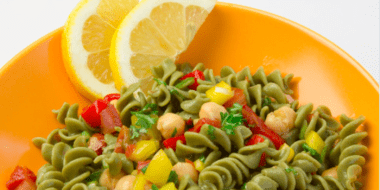Organic on your mind? More and more we have seen a rise in the demand for cleaner, chemical-free products, and many companies have started to listen. From produce to dairy and meat, in hygiene and personal care items, we are starting to see an increase in the variety and availability of certified organic, pesticide-free, and locally grown products. The fact is, these products come at a higher price compared to their conventional counterparts. Compare that price to the much higher cost to our health and the investment in cleaner alternatives seems worth it. Nonetheless, it is a real problem for the average North American family to be able to afford a grocery bill solely containing organically grown food. But don’t despair! There are many ways you can effectively minimize your exposure to pesticides in your produce even when you’re on a budget.
FRUITS AND VEGETABLES: YOUR BEST AND WORST BETS
To help you make more discerning choices about which items should be prioritized within your organic purchases when you can’t go “all in”, we can zero in on the “Deal Breakers” and “Exception Makers” of the fruit and vegetable world. No matter how much we soak, scrub, rinse, or peel our produce, a lot of the contamination is systemic—it has actually been grown directly into the flesh of the food and cannot be removed by any means. However, do continue these practices as they will remove some of the residue and every little bit matters.
Non-organic produce you should take a pass on
A fantastic tool when it comes to produce is the “Dirty Dozen” list. This list is courtesy of the Environmental Working Group (EWG), a non-profit, non-partisan organization dedicated to protecting human health and the environment. They have been releasing this guide every year since 2004 and it is based on results of more than 40,900 samples of produce tested by the U.S. Department of Agriculture and the Food and Drug Administration. These are the ones you can consider the “Deal Breakers” of produce. If you can’t access them organically, try to choose another option.
And the award for the dirtiest, most pesticide-contaminated produce goes to:
- Strawberries
- Spinach
- Kale
- Nectarines
- Apples
- Grapes
- Peaches
- Cherries
- Pears
- Tomatoes
- Celery
- Potatoes
Further, 90% of the produce on the dirty list tested positive for residues of multiple pesticides, and kale and spinach samples had up to 80% more residues by weight than all the other crops.
Conventional produce you can swallow
This brings us to the “Exception Makers”. When buying solely organic produce is not an option, this list will be an invaluable tool to help you decide what should really be purchased only organically and those conventionally grown items that can get away with a good scrub, soak, and/or peel.
Drum roll for EWG's "Clean 15" for 2019:
- Avocado
- Sweet Corn
- Pineapple
- Frozen sweet peas
- Onions
- Papaya
- Eggplant
- Asparagus
- Kiwi
- Cabbage
- Cauliflower
- Cantaloupe
- Broccoli
- Mushroom
- Honeydew Melon
Note that corn is one of the most genetically modified crops due its mass production for animal feed in conventional farming. To avoid these GMOs and their associated risks, you would also do well to opt for organic corn.
WHY YOU SHOULD BE CONCERNED ABOUT “APPROVED” PESTICIDES
After all, the government wouldn’t allow them to be used on food if they weren’t safe, right? Not so fast. Let’s start with the spotlight on companies like Monsanto. You may have watched in the news the images of farmers in their fields dressed in what looks like full HAZMAT suits. Complete with gas masks, they are spraying crops—crops for human consumption. While these pesticides have been deemed unsafe enough that crop workers must wear full-body protection, in a few short weeks those foods will be consumed by us!
Glyphosate is a broad-spectrum herbicide that is connected to some very high-profile lawsuits linking this chemical to cases of fatal cancer. It has also been found to be present in many children’s foods, notably those containing oats. Glyphosate was originally patented as a broad-spectrum antibiotic with the ability to kill everything—imagine what that could mean for the organisms of the microbiome living in our guts!
Another common ingredient in pesticide sprays are endocrine-disrupting xenoestrogens which are man-made chemicals that interfere with our ability to excrete estrogen, potentially leading to estrogen dominance as well as reproductive, developmental, neurological, and immune effects. Even with minimal exposure, their ubiquitous presence means ongoing accumulation, and the short- and long-term health effects can continue to occur and develop years after one has been exposed.
The bottom line is that these chemicals were clearly never meant to be a part of our bodies and we are only beginning to see the negative impact on our health. With the introduction of new chemicals each year, we have no way of knowing how pesticides that improve crop yield will influence both our short- and long-term health.
TIPS FOR MINIMIZING CHEMICALS IN ANY PRODUCE
But wait, there’s more! Don’t stop at simply choosing this and not that. Here are some other tips to help you keep pesticide exposure to a minimum:
- Look for greenhouse-grown produce as many indoor-grown foods do not require heavy doses of insecticides.
- Buy local. Get to know your farmers at the market. Many small, local farmers are not using pesticides and have “pesticide-free” options. Local produce will also likely be more recently picked.
- Wash, scrub, and/or peel all produce—organic and non-organic—well.
- Plant a garden! Start small with a planter of kale or a patch of peppers. Get your kids involved in gardening!
In a perfect world we would all be able to buy food and products for our home and bodies that were certified organic, that were not genetically modified, and that we could automatically count on to not contain a cocktail of harmful chemicals that wreak havoc on our bodies. Using this list as a guide will help you make decisions about what makes it into your cart and onto your plates at home. Be mindful and just do your best to seek out the cleanest forms of your favourite produce on a continual basis. Every little bit counts when it comes to minimizing your exposure.
Remember: Buying organic doesn't have to be an all-or-nothing proposition. Here's what to do when you can't buy organic.






